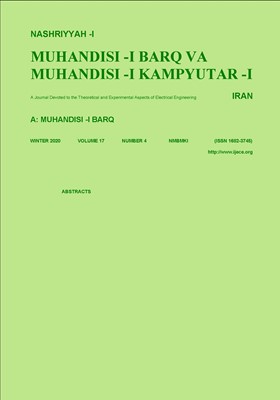-
-
List of Articles
-
Open Access Article
1 - Design of a New Observer for Unknown and Variable Input Time-Delay Estimation in Linear SISO Systems
Hadi Chahkandi Nejad mohsen Farshad Ramazan Havangi -
Open Access Article
2 - Improvement in Electrical Characteristics of Silicon on Insulator Junctionless Field Effect Transistor (SOI-JLFET) Using the Auxiliary Gate
M. Vadizadeh -
Open Access Article
3 - Robust Scheduling of a Smart Microgrid Connected to the Grid Considering Air Pollution in the Presence of Controllable Loads
amin namvar NAVID TAGHIZADEGAN KALANTARI -
Open Access Article
4 - A Hybrid Method for Transmission Cost Allocation Based on Effect of Transmission Facilities in System Reliability and Merchant Value
Hassan Esmaili علی کریمی -
Open Access Article
5 - Design and Fabrication of a Miniaturized Gysel Power Divider with Harmonic Suppression Feature Using Low-Pass Filter
-
Open Access Article
6 - A New Multiport DC-DC Converter Based on T-Source for PV-Battery Applications
saber zare A. Rajaei M. R. Kheyrati Mohammad Mardaneh -
Open Access Article
7 - Sliding Mode Control Applied in Two-wheeled Self-Balancing Robot System in Presence of Structured and Un- Structured Uncertainties in Dynamical Equations and Without the Need for Kinematic Equations
M. R. Soltanpour R. Gholami -
Open Access Article
8 - An Intelligent Approach for OFDM Channel Estimation Using Gravitational Search Algorithm
F. Salehi mohammad hassan majidi N. Neda
-
The rights to this website are owned by the Raimag Press Management System.
Copyright © 2017-2025







